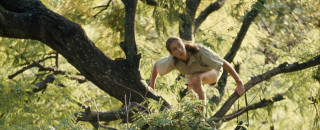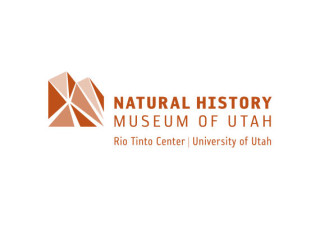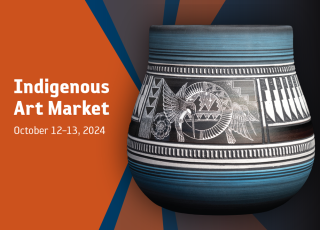NHMU to Open “Becoming Jane” an Immersive Multimedia Exhibition on the Legacy of Dr. Jane Goodall
SALT LAKE CITY—Nov. 28, 2023—Dr. Jane Goodall, DBE, founder of the Jane Goodall Institute & UN Messenger of Peace—has created an indelible legacy in the fields of science and conservation—a legacy celebrated in “Becoming Jane: The Evolution of Dr. Jane Goodall,” a new exhibition opening at the Natural History Museum of Utah (NHMU) on December 7, 2023. Produced in partnership with the National Geographic Society and the Jane Goodall Institute, the exhibition explores Dr. Goodall’s life from her early years as an intrepid young woman with a dream to learn about animals in Africa, to her years establishing herself as a renowned scientist in Gombe, Tanzania to her present role as an activist, mentor and advocate for creating a better world for all life on Earth. “Becoming Jane” will remain open at NHMU until May 27, 2024.
Widely known for her innovative approach to animal behavior research, Dr. Goodall traveled to what is now Tanzania’s Gombe Stream National Park and immersed herself in observing chimpanzees in their natural habitat. Her work studying the lives of chimpanzees in the wild captured the imagination of the world. Rather than seeing the animals as subjects, she came to know them as individuals with personalities and emotions—a notion once rejected by the scientific world, yet now considered revolutionary. Her story—one of fearless determination, curiosity, the pursuit of knowledge and a passionate love of the natural world—has resonated with generations of people around the globe.
“Jane Goodall has been inspiring National Geographic audiences, young and old, for over half a century,” said Anthony Luckett, vice president of business development at the National Geographic Society. “This exhibition allows us to experience her amazing life story in a highly personal and powerful way. Through immersive media, authentic scenic and interactives, this exhibition takes visitors into the field and around the world with Jane, walking in her shoes and experiencing her powerful message of hope firsthand.”
“We are thrilled to welcome ‘Becoming Jane’ to NHMU and offer our visitors the opportunity to understand and appreciate Dr. Jane Goodall, a pioneering icon of science,” said Dr. Jason Cryan, The Sarah B. George Executive Director. “NHMU is inspired by Dr. Goodall’s life and work, which affirms that science is ever evolving, and conservation is the key to preserving our natural world. We are grateful for the tremendous strides Dr. Goodall has made in understanding our closest living relatives and are excited for visitors to learn about Dr. Goodall’s innovative research techniques and explore her passion for nature.”
Highlights from the exhibition include:
- A multiscreen experience where visitors are introduced to Dr. Goodall’s extraordinary work, alongside surprising encounters with virtually rendered chimpanzees.
- A replica of Dr. Goodall’s research tent where, in a hands-on experience, visitors can envision themselves as scientists jotting down observations in their field journal.
- A hologram-like projection of Dr. Goodall who shares her memories in Gombe and recalls her thoughts, feelings, impressions and lessons learned while living among chimpanzees.
- An immersive projection of Tanzania’s Gombe Stream National Park
- Interactive augmented reality (AR) activities, including one in which visitors can test their skills at matching the pant-hoot vocalization of a chimpanzee.
- Updates on the current state of Gombe Stream National Park and the chimpanzee range in Africa, along with the work of the innovative scientists and conservationists who are following in Dr. Goodall’s footsteps.
- A call to action to visitors from Dr. Goodall to join her, the Jane Goodall Institute and National Geographic in an effort to ensure a more sustainable future for us all.
- A pledge station where visitors can share what actions they will take to help Dr. Goodall in her mission.
Join NHMU on December 9, 2023, from 11 a.m. to 2 p.m. for the opening celebration of “Becoming Jane”. The opening celebration will include an activity zone with face painting and a community art project; hourly presentations by HawkWatch International; the Utah Museum of Contemporary Art truck featuring What Sustains? by Nina Elder; and a keynote lecture from biological anthropologist and primatologist Rachna Reddy entitled Coming of Age in Chimpanzees.
In its commitment to bringing visitors the most up-to-date scientific knowledge, NHMU is continually updating exhibits to reflect new discoveries. NHMU has added a new permanent exhibition: Climate of Hope, which tells the story of how we can build a thriving future in a world with a changing climate through hands-on interactives, immersive environments and captivating photos.
In addition to a new permanent exhibit, NHMU has also recently updated its ‘Life Gallery’ with a new exhibit sharing groundbreaking information about ribosomes, the structures that create proteins – essential building blocks of life – and a substantial update to the ‘Hominid wall’, adding new information about our early ancestors.
Don't miss your chance to visit Becoming Jane: The Evolution of Dr. Jane Goodall at NHMU from December 9, 2023, to May 27, 2024. Becoming Jane is free with the cost of admission to the Museum and always free to members. For tickets and more information about Becoming Jane, please visit: nhmu.utah.edu/jane.
About Dr. Jane Goodall
Jane Goodall was born on April 3, 1934 in London, England. At the young age of 26, she followed her passion for animals and Africa to Gombe, Tanzania, where she began her landmark study of chimpanzees in the wild—immersing herself in their habitat as a neighbor rather than a distant observer. Her discovery in 1960 that chimpanzees make and use tools rocked the scientific world and redefined the relationship between humans and animals. In 1977, she established the Jane Goodall Institute (JGI) to advance her work around the world and for generations to come. JGI continues the field research at Gombe and builds on Dr. Goodall’s innovative approach to conservation, which recognizes the central role that people play in the well-being of animals and the environment. In 1991, she founded Roots & Shoots, a global program that connects young people in more than 60 countries to be conservation activists in their daily lives. Today, Dr. Goodall travels the world, speaking about the threats facing chimpanzees, other environmental crises, and her reasons for hope. In her books and speeches, she emphasizes the interconnectedness of all living things and the collective power of individual action.
About the Jane Goodall Institute
The Jane Goodall Institute (JGI) is a global, community-centered conservation organization founded in 1977 that advances the vision and work of Dr. Jane Goodall in over 30 countries around the world. We aim to understand and protect chimpanzees, other apes and their habitats, and empower people to be compassionate citizens in order to inspire conservation of the natural world we all share. JGI uses research, collaboration with local communities, best-in-class animal welfare standards, and the innovative use of science and technology to inspire hope and transform it into action for the common good. Through our Roots & Shoots program for young people of all ages, now active in over 60 countries around the world, JGI is creating an informed and compassionate critical mass of people who will help to create a better world for people, other animals and our shared environment.
About the National Geographic Society
The National Geographic Society is a global nonprofit organization that uses the power of science, exploration, education and storytelling to illuminate and protect the wonder of our world. Since 1888, National Geographic has pushed the boundaries of exploration, investing in bold people and transformative ideas, providing more than 15,000 grants for work across all seven continents, reaching 3 million students each year through education offerings, and engaging audiences around the globe through signature experiences, stories and content. To learn more, visit www.nationalgeographic.org or follow us on Instagram, Twitter and Facebook.
About the Natural History Museum of Utah
The Natural History Museum of Utah is one of the leading scientific research and cultural institutions in the country. Established in 1963, the Museum’s collections contain more than 2 million objects and offers innovative exhibitions and educational programs to thousands of residents and visitors each year, including traveling and permanent exhibits, special events and other programs. With an expected attendance of 300,000 visitors a year, the Museum also offers a variety of outreach programs to communities and schools throughout Utah, reaching every school district in the state annually. The Museum has an active science program with more than 30 scientists and 10 field exhibitions each year.
###
Download Media
-
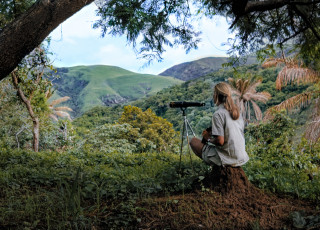
In her early days at Gombe, Jane Goodall spent many hours sitting on a high peak with binoculars or a telescope, searching the forest below for chimpanzees. Learn more about Jane Goodall’s groundbreaking behavioral research at “Becoming Jane: The Evolution of Dr. Jane Goodall,” an exhibition organized by National Geographic and the Jane Goodall Institute. The exhibition is open at the Natural History Museum of Utah in Salt Lake City, UT from Dec. 9, 2023 through May 27, 2024 Photo by Jane Goodall, Jane Goodall Institute
-
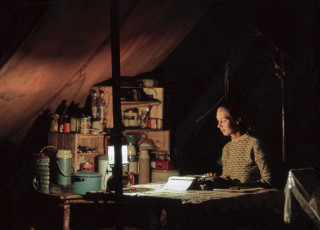
Each evening in her tent, researcher Jane Goodall would write up data from her field notebooks, recounting the chimpanzee behavior she observed that day. Immerse yourself in a replica of Jane’s research camp at “Becoming Jane: The Evolution of Dr. Jane Goodall,” an exhibition organized by National Geographic and the Jane Goodall Institute. The exhibition is open at the Natural History Museum of Utah in Salt Lake City, UT from December 9, 2023 through May 27, 2024 Photo by Hugo Van Lawick, Jane Goodall Institute
-
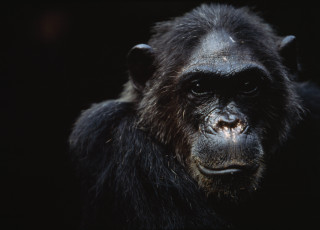
A portrait of the chimpanzee, Fifi, member of Jane Goodall’s first studied group of chimpanzees in Gombe National Park, Tanzania. Learn more about the chimpanzees of Gombe at “Becoming Jane: The Evolution of Dr. Jane Goodall,” an exhibition organized by National Geographic and the Jane Goodall Institute. The exhibition is open at the Natural History Museum of Utah in Salt Lake City, UT from December 7, 2023 through May 27, 2024. Photo by Michael Nichols, National Geographic
-
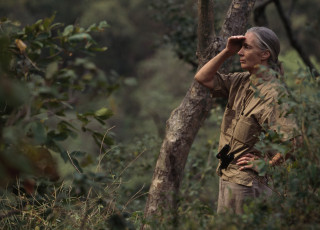
Jane Goodall, 35 years after her original observations, finding great joy in watching the Gombe chimpanzees. Gombe National Park, Tanzania. Learn more about Jane Goodall’s groundbreaking behavioral research at “Becoming Jane: The Evolution of Dr. Jane Goodall,” an exhibition organized by National Geographic and the Jane Goodall Institute. The exhibition is open at the Natural History Museum of Utah in Salt Lake City, UT from December 7, 2023 through May 27, 2024. Photo by Michael Nichols, National Geographic
-

Jane Goodall, Gombe National Park, Tanzania. Learn more about the life and legacy of Jane Goodall at “Becoming Jane: The Evolution of Dr. Jane Goodall,” an exhibition organized by National Geographic and the Jane Goodall Institute. The exhibition is open at the Natural History Museum of Utah in Salt Lake City, UT from December 7, 2023 through May 27, 2024. Photo by Michael Nichols, National Geographic
-
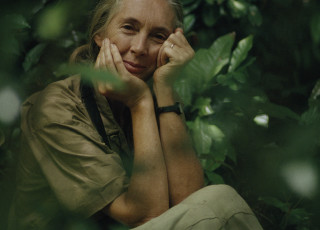
In 1995, after a hard day of following Gombe chimpanzees over difficult terrain in Gombe National Park, Tanzania. Learn more about the life and legacy of Jane Goodall at “Becoming Jane: The Evolution of Dr. Jane Goodall,” an exhibition organized by National Geographic and the Jane Goodall Institute. The exhibition is open at the Natural History Museum of Utah in Salt Lake City, UT from December 7, 2023 through May 27, 2024. Photo by Michael Nichols, National Geographic
-
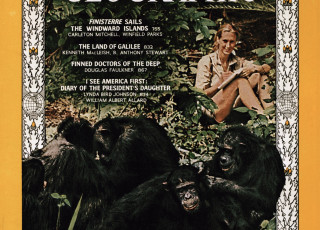
Jane Goodall’s first article was published in 1963 and a second article was featured on the December 1965 cover of National Geographic magazine. Learn more about the life and legacy of Jane Goodall at “Becoming Jane: The Evolution of Dr. Jane Goodall,” an exhibition organized by National Geographic and the Jane Goodall Institute. The exhibition is open at the Natural History Museum of Utah in Salt Lake City, UT from December 7, 2023 through May 27, 2024. Credit National Geographic
-
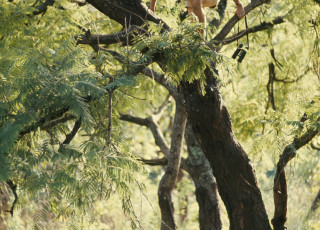
Jane Goodall with binoculars climbs a tree to better view chimpanzees. Learn more about Jane Goodall’s groundbreaking behavioral research at “Becoming Jane: The Evolution of Dr. Jane Goodall,” an exhibition organized by National Geographic and the Jane Goodall Institute. The exhibition is open at the Natural History Museum of Utah in Salt Lake City, UT from December 7, 2023 through May 27, 2024. Photo by Hugo van Lawick, National Geographic
